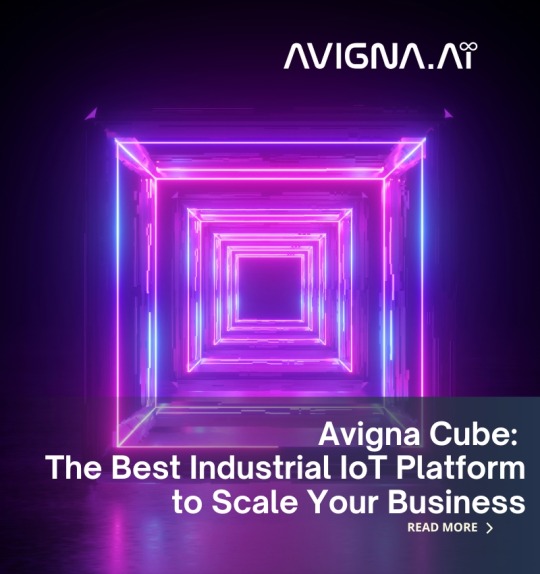Text
9 Essential Criteria for Partner Selection in Enterprise IoT – Avigna
Enterprise IoT solutions - Enterprise IoT projects are complex endeavors that require collaboration with the right partners to ensure success. Choosing a vendor or partner for hardware

Enterprise IoT (Internet of Things) solutions refer to the integration of IoT technologies into the operations and processes of large organizations or enterprises. IoT involves connecting devices, sensors, and systems to the internet to collect and exchange data, enabling improved decision-making, automation, and efficiency. Here are key components and considerations for implementing enterprise IoT solutions:
Devices and Sensors:
Choose appropriate IoT devices and sensors based on the specific needs of your enterprise.
Ensure compatibility and standardization for seamless integration.
Consider factors like power consumption, connectivity options, and data transmission capabilities.
Connectivity:
Select reliable and secure communication protocols (e.g., MQTT, CoAP, HTTP) for connecting IoT devices.
Implement robust networking solutions to ensure constant and stable connectivity.
Evaluate the need for edge computing to process data locally and reduce latency.
Data Management and Analytics:
Develop a strategy for collecting, storing, and managing large volumes of IoT data.
Implement analytics tools and platforms to derive actionable insights from the collected data.
Utilize machine learning algorithms for predictive analytics and anomaly detection.
Security:
Implement strong security measures to protect IoT devices, networks, and data.
Use encryption, secure authentication, and regular security updates to safeguard against potential threats.
Establish secure device onboarding and lifecycle management practices.
Integration with Existing Systems:
Ensure seamless integration with existing enterprise systems such as ERP (Enterprise Resource Planning), CRM (Customer Relationship Management), and other business applications.
Leverage APIs (Application Programming Interfaces) for interoperability and data exchange.
Scalability:
Design the IoT solution with scalability in mind to accommodate future growth.
Consider the ability to add new devices and sensors without major disruptions to the existing infrastructure.
Regulatory Compliance:
Stay informed about regulations and standards related to IoT in your industry.
Ensure that your IoT solution complies with data privacy and security regulations.
User Interface and Experience:
Develop user-friendly interfaces for monitoring and managing IoT devices and data.
Provide dashboards, analytics tools, and notifications for better user experience.
Maintenance and Updates:
Establish a plan for regular maintenance and updates of IoT devices and software.
Implement over-the-air (OTA) updates to remotely update firmware and software.
Cost Management:
Evaluate the total cost of ownership (TCO) of the IoT solution, considering initial setup costs, maintenance, and potential upgrades.
Look for cost-effective and scalable solutions that align with your budget.
Implementing enterprise IoT solutions requires a comprehensive approach, involving collaboration between IT, operations, and other relevant departments to ensure successful deployment and integration into the existing business processes.
Website: - https://avigna.ai/9-essential-criteria-for-partner-selection-in-enterprise-iot/
0 notes
Text
Specialized Consulting – Avigna
Internet of things consulting services - At Avigna, we are passionate about building a connected world. We believe in the power of Big Data, Machine Learning, and Artificial Intelligence. Our Specialized Consulting Services aim to enable our customers to embrace these futuristic technologies for their business growth.

Internet of Things (IoT) consulting services play a crucial role in helping businesses navigate the complexities of implementing IoT solutions. Here are some key aspects and services that IoT consulting firms typically offer:
Strategic Planning:
Needs Assessment: Understanding the specific requirements and challenges of your business to identify areas where IoT can add value.
Roadmap Development: Creating a strategic plan for IoT adoption, including a step-by-step roadmap for implementation.
Technology Selection:
Platform Evaluation: Helping you choose the right IoT platform based on your requirements, considering factors like scalability, security, and interoperability.
Hardware and Sensors: Advising on the selection of appropriate devices, sensors, and actuators for your IoT ecosystem.
Security and Compliance:
Security Audits: Conducting security assessments to identify potential vulnerabilities and implementing measures to ensure data integrity and confidentiality.
Compliance Management: Ensuring that your IoT implementation complies with relevant industry regulations and standards.
Data Management and Analytics:
Data Strategy: Developing a comprehensive strategy for collecting, storing, and analyzing IoT-generated data.
Analytics Integration: Implementing analytics solutions to derive actionable insights from the massive amounts of data generated by IoT devices.
Integration Services:
Legacy System Integration: Integrating IoT solutions with existing systems and technologies within your organization.
API Development: Building custom APIs to facilitate seamless communication between different components of your IoT ecosystem.
Prototyping and Proof of Concept:
Rapid Prototyping: Developing prototype IoT solutions to test and validate concepts before full-scale implementation.
Proof of Concept (PoC): Creating a small-scale implementation to demonstrate the feasibility and benefits of the proposed IoT solution.
Implementation and Deployment:
Project Management: Overseeing the end-to-end implementation process, ensuring timely delivery and adherence to quality standards.
Deployment Support: Assisting with the deployment of IoT devices, software, and infrastructure.
Training and Support:
Staff Training: Providing training programs to equip your team with the necessary skills for managing and maintaining IoT systems.
Ongoing Support: Offering post-implementation support services to address issues and ensure smooth operation.
Scalability Planning:
Future-Proofing: Designing IoT solutions with scalability in mind to accommodate future growth and technological advancements.
Continuous Improvement:
Performance Optimization: Regularly assessing and optimizing IoT systems for improved efficiency and performance.
Technology Updates: Keeping clients informed about the latest advancements in IoT technology and recommending updates as needed.
When choosing an IoT consulting service, it's essential to consider their expertise, experience, and a track record of successful IoT implementations in your industry. Additionally, look for a provider that understands the unique challenges and opportunities associated with your specific business domain.
Website: - https://avigna.ai/specialized-consulting-services/
0 notes
Text
Smart Dashboards – Avigna
IoT dashboard - Welcome to Avigna Smart Dashboards. Imagine having your IoT devices at your fingertips, offering real-time insights and control. That’s what our Smart Dashboards bring to the table – a smarter, more connected world for you.

An IoT (Internet of Things) dashboard is a visual interface that allows users to monitor and manage connected devices and data in real-time. These dashboards play a crucial role in IoT applications by providing a centralized platform to view, analyze, and control various aspects of connected devices and systems. Here are some key features and components commonly found in IoT dashboards:
Device Overview:
Display a summary of all connected devices.
Provide information on device status, such as online/offline, and health.
Real-time Data Visualization:
Present real-time data from sensors or devices in the form of charts, graphs, or gauges.
Enable users to quickly interpret data trends and make informed decisions.
Alerts and Notifications:
Set up alerts for abnormal conditions or events.
Receive notifications through the dashboard or other communication channels
Device Control:
Allow users to remotely control connected devices.
Implement functionalities like turning devices on/off, adjusting settings, etc.
Historical Data Analysis:
Provide tools for analyzing historical data.
Support data filtering, time-based analysis, and trend identification.
User Authentication and Authorization:
Implement secure login mechanisms to ensure only authorized users can access the dashboard.
Assign different levels of access based on user roles.
Geospatial Visualization:
If applicable, display the geographical location of devices on a map.
Enable users to interact with devices based on their physical location.
Customization:
Allow users to customize the dashboard layout and choose the specific data they want to monitor.
Support configurable widgets and layouts.
Integration with Other Systems:
Integrate with external systems or third-party services for a comprehensive view of data.
Provide APIs for easy integration with other applications.
Security:
Implement robust security measures to protect data and ensure the privacy of users.
Use encryption, secure protocols, and follow best practices for IoT security.
Scalability:
Design the dashboard to handle a growing number of devices and data points.
Ensure scalability to accommodate future expansions.
Popular tools and platforms for creating IoT dashboards include Grafana, ThingsBoard, Ubidots, and others. The choice of platform often depends on specific project requirements and the underlying IoT ecosystem.
Website: - https://avigna.ai/smart-dashboards/
0 notes
Text
Avigna Cube - How our Award-Winning IoT Platform Empowers IoT Developers and Innovators? – Avigna
Best IoT platform - Avigna Cube - the IoT platform that has won awards, is a complete solution that facilitates the development process and empowers developers and innovators to generate ground-breaking products.

As of my last knowledge update in January 2022, there isn't a one-size-fits-all answer to the "best" IoT platform, as the choice depends on various factors such as your specific use case, requirements, budget, scalability, and integration needs. Additionally, the IoT landscape is dynamic, with new platforms emerging and existing ones evolving.
However, as of 2024, some popular and widely used IoT platforms include:
AWS IoT Core (Amazon Web Services): Amazon's IoT platform is known for its scalability, security features, and integration with other AWS services.
Azure IoT Suite (Microsoft Azure): Microsoft's Azure IoT offers a comprehensive set of tools and services for building, deploying, and managing IoT solutions.
Google Cloud IoT Core (Google Cloud): Google's IoT platform provides scalable and secure device connectivity, along with integration with other Google Cloud services.
IBM Watson IoT Platform: IBM's platform is known for its advanced analytics capabilities, offering features like predictive maintenance and real-time insights
ThingSpeak: An open-source IoT platform by MathWorks, ThingSpeak is often used for data collection, analysis, and visualization.
Bosch IoT Suite: Bosch offers a suite of tools and services for building IoT solutions, with a focus on industrial IoT applications.
IoTSys: IoTSys is an open-source IoT platform designed for flexibility and ease of use.
Losant: Losant is known for its user-friendly interface and is often used for building complex IoT applications.
When choosing an IoT platform, consider factors such as device compatibility, security features, analytics capabilities, scalability, and the level of support and documentation provided by the platform. Additionally, check for any updates or new platforms that may have emerged since my last update in January 2024.
Website: - https://avigna.ai/the-best-iot-platform-avigna-cube/
0 notes
Text
Edge Computing Software Modules - Avigna
Iot app development company - At Avigna, our commitment to simplifying IoT Implementation to enterprises of all kinds takes the shape of our signature product “Edge Computing Software Modules”. This comprehensive suite of modules empowers businesses and developers to streamline their IoT development goals with the fullest potential of IoT.

If you are looking for an Internet of Things (IoT) app development company, there are several reputable companies that specialize in this field. Keep in mind that the popularity and reputation of companies may change over time, so it's a good idea to check recent reviews and case studies. As of my last knowledge update in January 2022, here are a few well-known IoT app development companies:
Before selecting a company, it's crucial to define your specific requirements and goals for the IoT app. Additionally, consider factors such as the company's expertise, experience in IoT development, portfolio, client reviews, and pricing.
Always reach out to multiple companies, discuss your project in detail, and ask for proposals before making a decision. Additionally, check for any updates or changes in the company's reputation and offerings since my last knowledge update in January 2022.
Website: - https://avigna.ai/edge-computing-software-modules/
1 note
·
View note